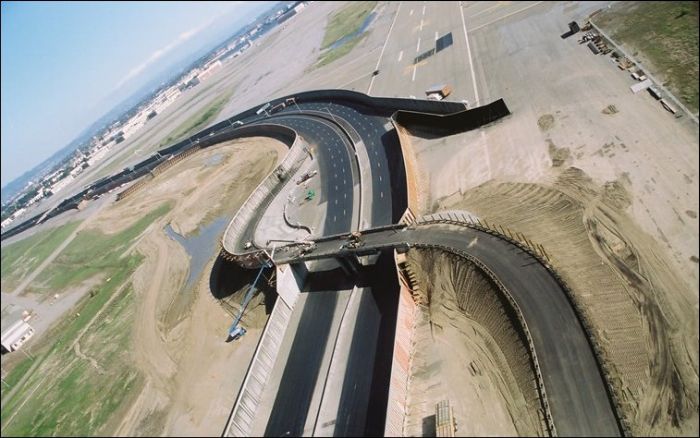|
|
The Matrix, Behind The Scenes
|
The method used for creating these effects involved a technically expanded version of an old art photography technique known as time-slice photography, in which a large number of cameras are placed around an object and triggered nearly simultaneously. Each camera is a still-picture camera, and not a motion picture camera, and it contributes just one frame to the video sequence. When the sequence of shots is viewed as in a movie, the viewer sees what are in effect two-dimensional "slices" of a three-dimensional moment. Watching such a "time slice" movie is akin to the real-life experience of walking around a statue to see how it looks from different angles. The positioning of the still cameras can be varied along any desired smooth curve to produce a smooth looking camera motion in the finished clip, and the timing of each camera's firing may be delayed slightly, so that a motion scene can be executed (albeit over a very short period of real time).
Some scenes in The Matrix feature the "time-slice" effect with completely frozen characters and objects. Film interpolation techniques improved the fluidity of the apparent "camera motion". The effect was further expanded upon by the Wachowski brothers and the visual effects supervisor John Gaeta so as to create "bullet time", which incorporates temporal motion, so that rather than being totally frozen the scene progresses in slow and variable motion. Engineers at Manex Visual Effects pioneered 3-D visualization planning methods to move beyond mechanically fixed views towards more complicated camera paths and flexibly moving interest points. There is also an improved fluidity through the use of non-linear interpolation, digital compositing, and the introduction of computer generated "virtual" scenery. The movie was rendered on a FreeBSD cluster farm.
The objective of the bullet time shots in The Matrix was to creatively illustrate "mind over matter" type events as captured by a "virtual camera". However, the original technical approach was physically bound to pre-determined perspectives, and the resulting effect only suggests the capabilities of a true virtual camera.
The evolution of photogrametric and image-based computer-generated background approaches in The Matrix's bullet time shots set the stage for later innovations unveiled in the sequels The Matrix Reloaded and The Matrix Revolutions. Virtual Cinematography (CGI-rendered characters, locations, and events) and the high-definition "Universal Capture" process completely replaced the use of still camera arrays, thus more closely realizing the "virtual camera".
|
|









